
We boarded the bus and headed down the hill to start the walking part of the tour.

The bus drove past the Ponte Vecchio, giving us this excellent view as we were approaching it. The construction on the side are the various jewellers and goldsmith shops. The structure along the top of the shops is the Vasari Corridor which Cosimo I commissioned Giorgio Vasari to build in 1585. It's a half mile long passage from the Pitti Palace (left) across the river then along the river bank to the Uffizi (just off the right of the photo) and Palazzo Vecchio (his office). The original tenants (butchers and tanners) of the shops along the bridge were outsed due to the smell they created, which entered the Corridor.

This is a building from the Renaissance period showing the decorated nature of the stonework. (I think this was a bank). The hoops are for tethering one's horse while conducting business. Earlier buildings have plain stone walls, such as one might find in a cheap retaining wall these days. But affluence led to the desire for nicer looking buildings.
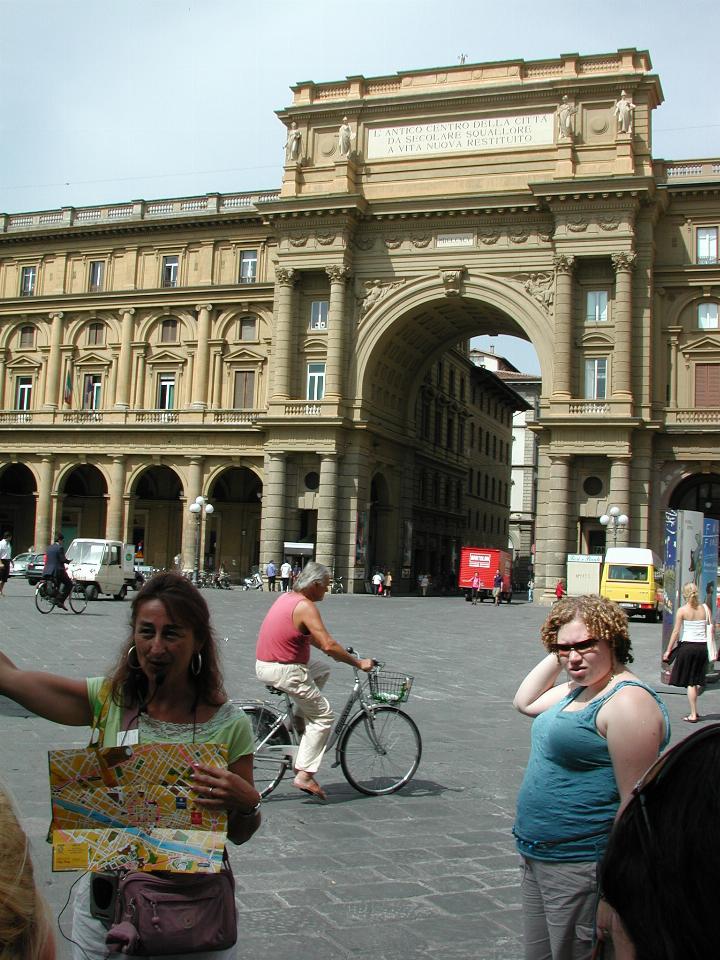
The Piazza della Repubblica is the location for the founding of the city by Caesar in 59BC. The Roman Forum stood here; later it was the city's market. Much of this old section was razed when Florence was briefly the capital of the unified Italy. Fortunately the capital moved to Rome before too much of the old city was destroyed. The lady with the map was our excellent guide, Antonella. You can just see that she is carrying a portable PA system!
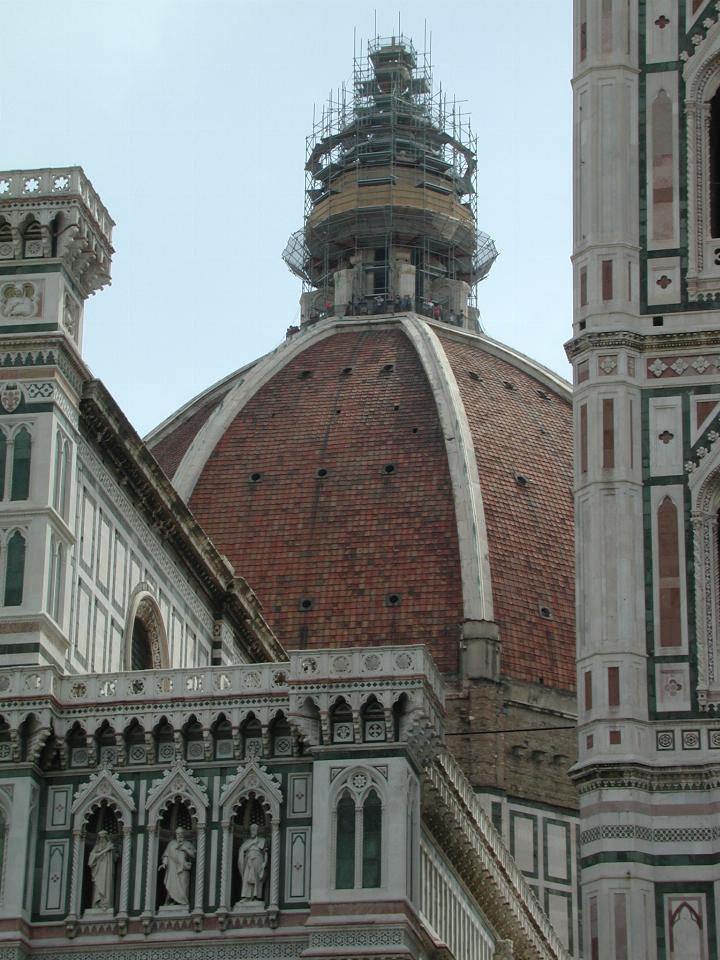
From Piazza della Repubblica we walked a couple of blocks to Piazza del Duomo. This photo has some details of the dome, specifically you can see people around the top enjoying the view. I never even entered the cathedral, let alone the dome, as there always seemed to be quite a queue.

Antonella in front of the Baptistry doors facing the Cathedral. You can see the detail on the doors. There are 3 sets of doors; these are the eastern set. And the panels on the doors are copies; the originals are in the Museo dell'Opera del Duomo.
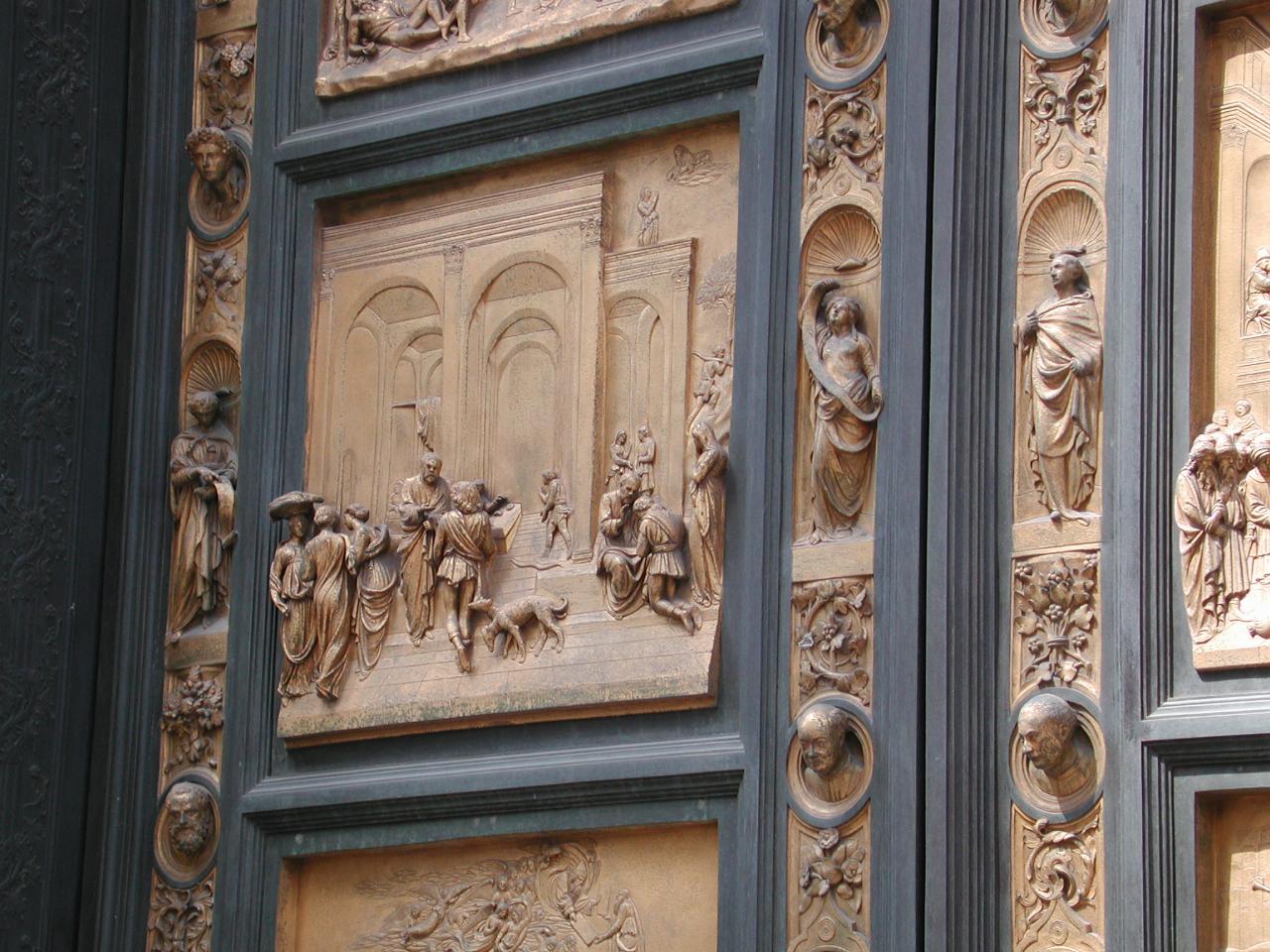
Jacob and Esau

Joseph
Two of the panels on the eastern doors. These doors contain 10 scenes from the Old Testament. Lorenzo Ghiberti took 28 years (1424 - 1452) to cast the 10 panels in these doors. And that's after spending 22 years on the northern doors! And he cast himself into the doors - his head is the bald one showing on the lower right of the left hand panel shown above.
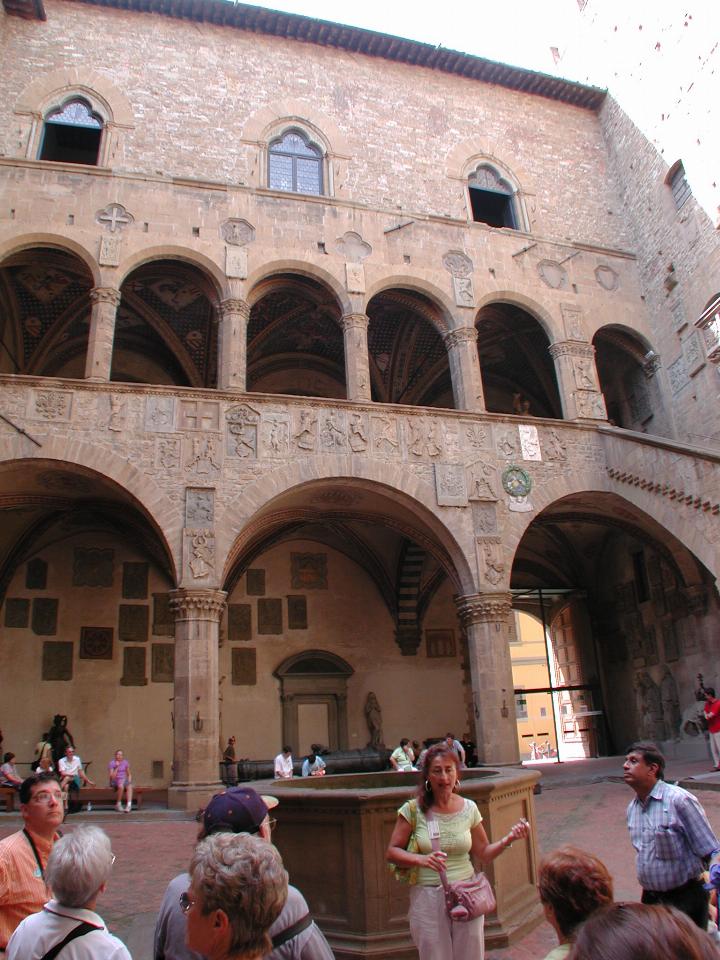
Our guide Antonella in the centre of the Bargello, explaining the history of the building, and what we are about to see! In 1255, the building's first role was the office for the nobleman who settled disputes among citizens. At various times it has been the Chief Magistrate's seat, police headquarters and a prison! In 1865 it opened as a museum, which it still is, holding the world's finest Renaissance sculpture collection. Photos are not allowed inside, so you won't see any of those statues here.
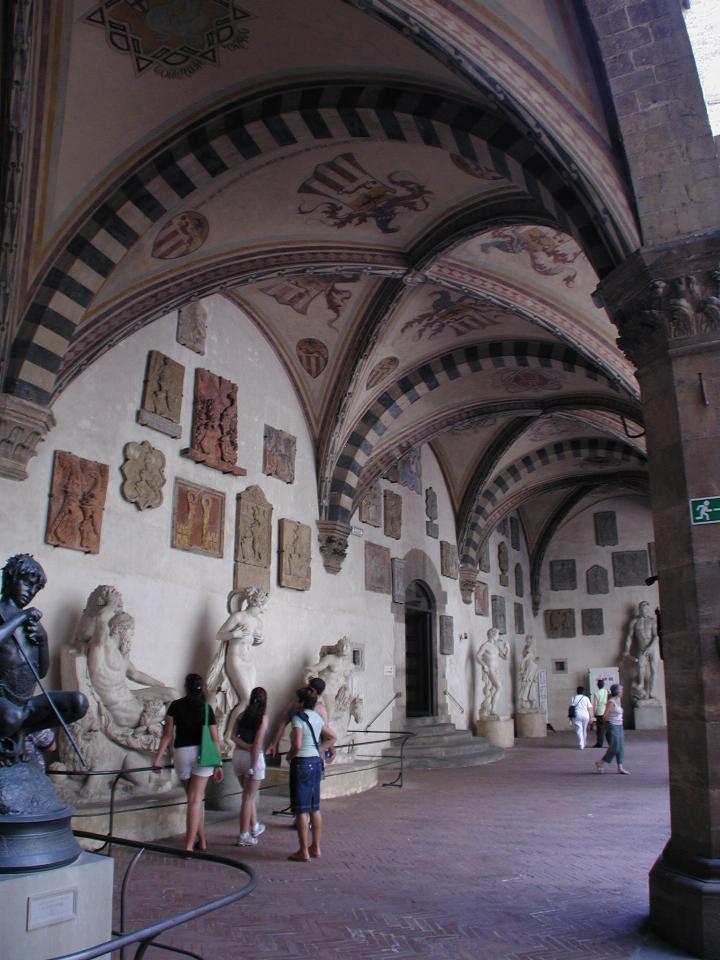
Part of the courtyard area, showing some of the statues on display. The really important ones are inside - and there are some quite impressive ones. The plaques on the wall are the coats of arms of various police commissioners. Some of these are also on the exposed walls surrounding the courtyard.
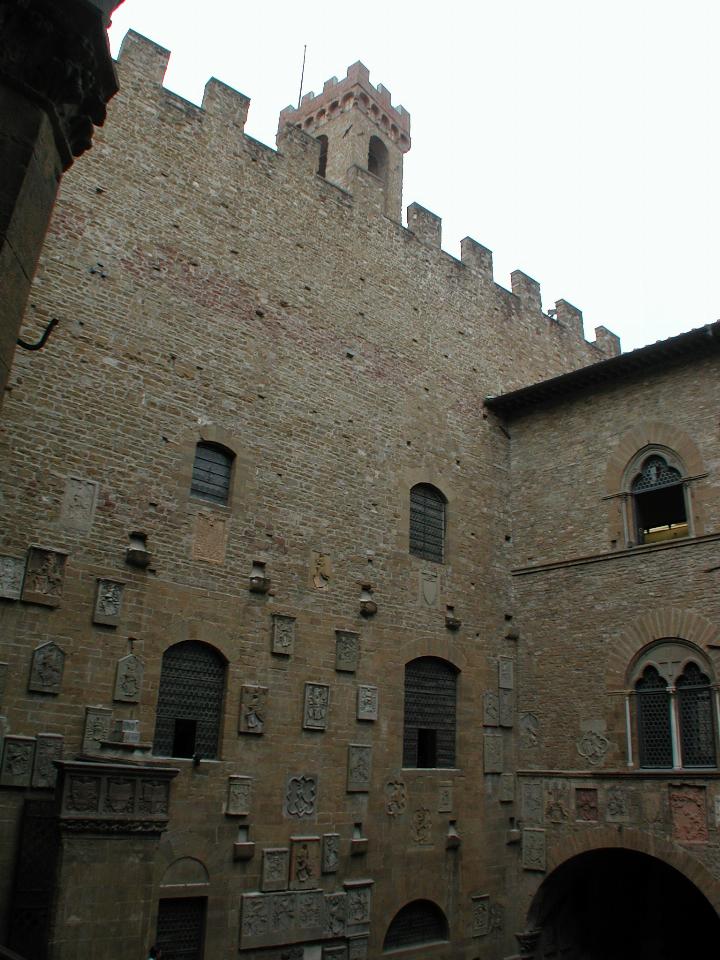
A view from the next level up, showing many of the coats of arms, as well as the top of the tower.

Another of the outdoor areas, with more statues and another impressive roof, which does not show very well here.